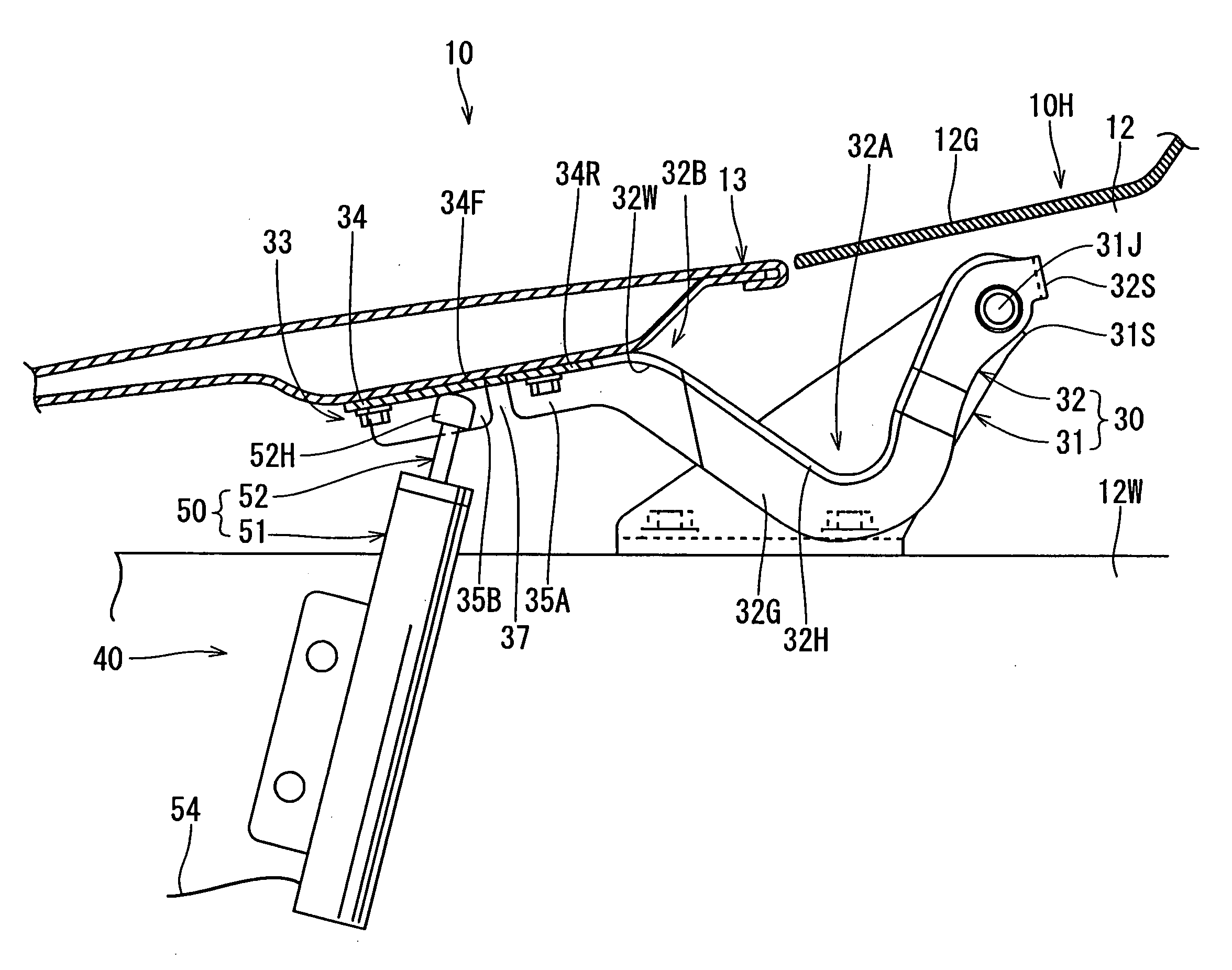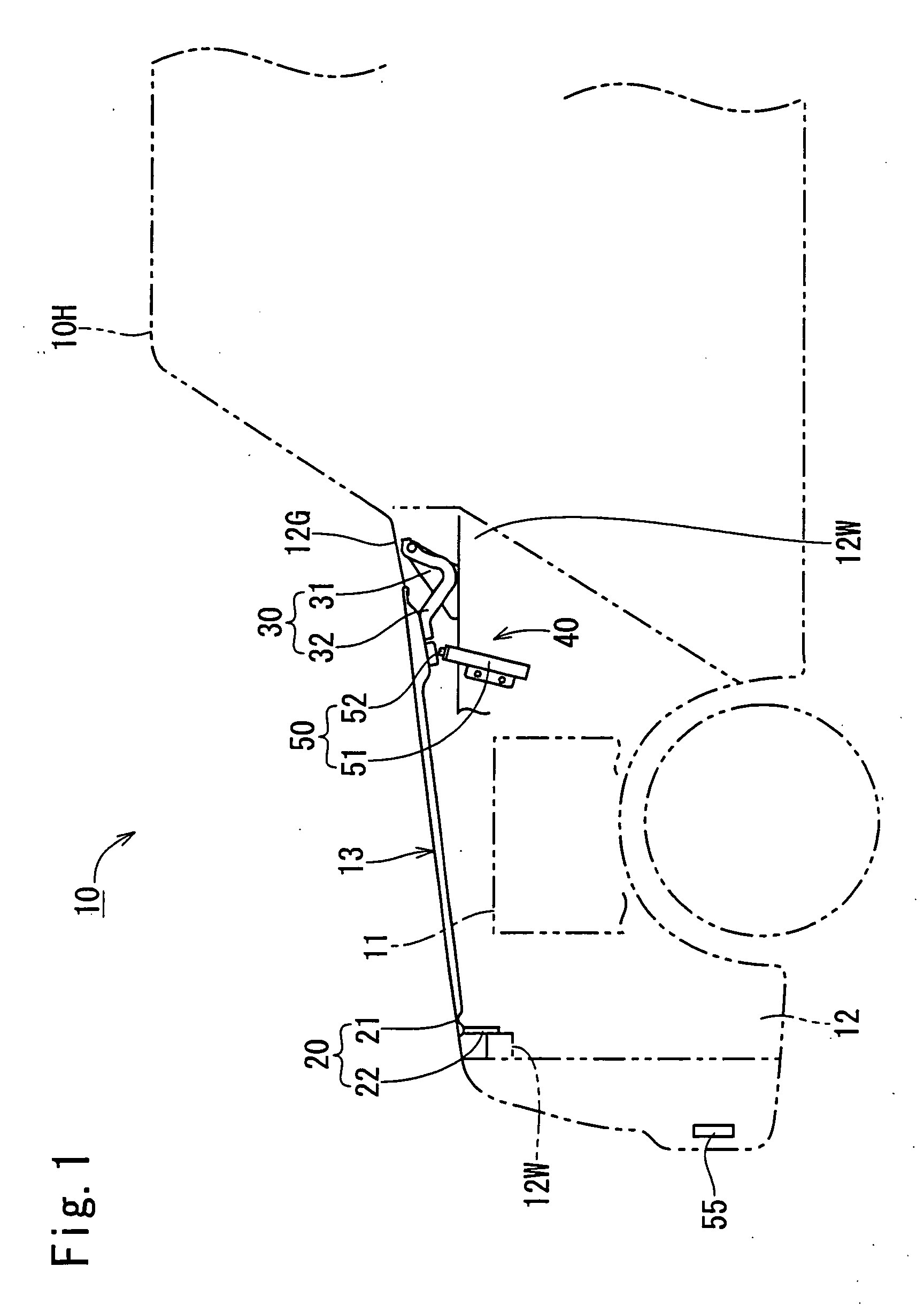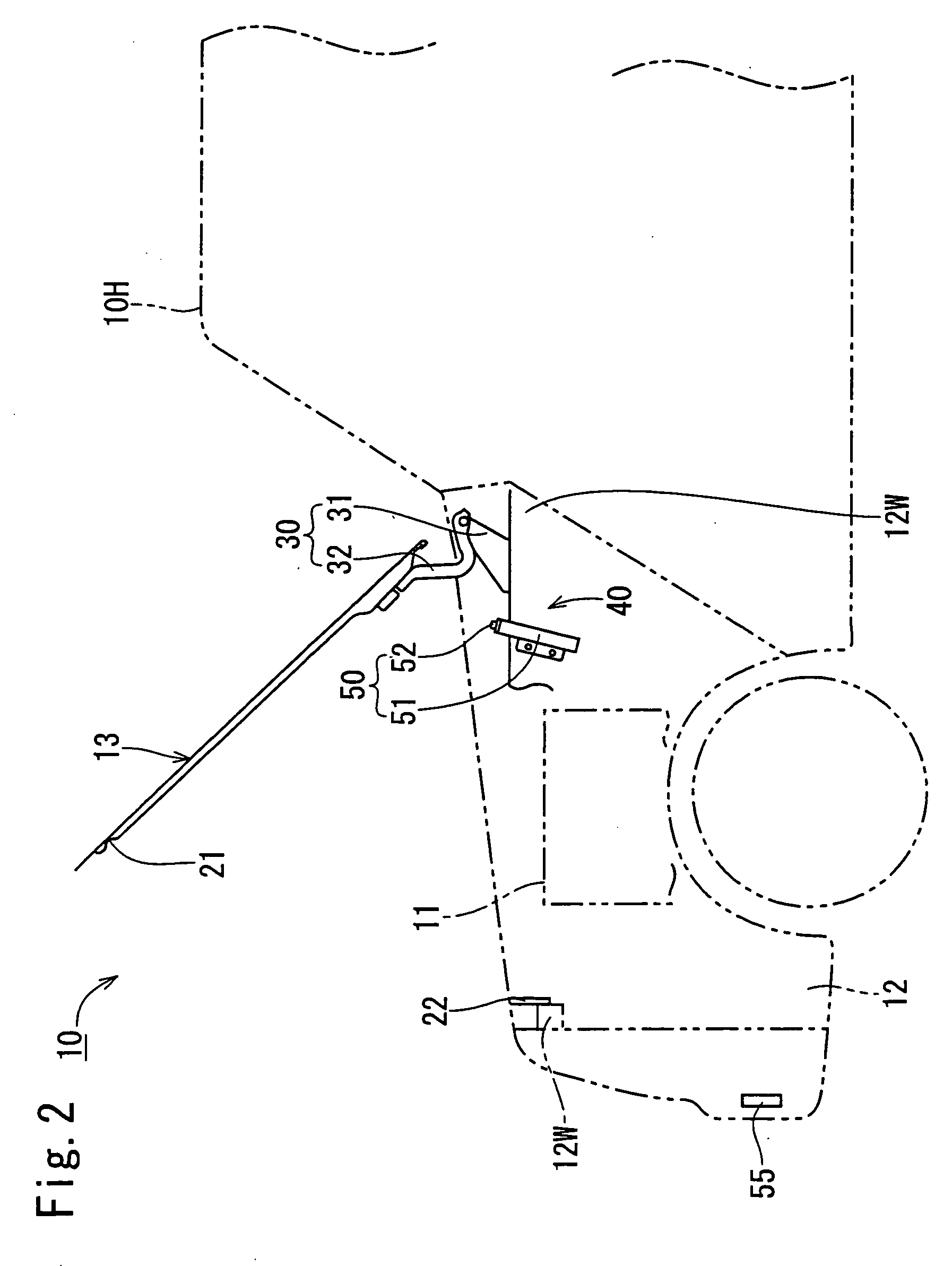Hood impact absorbing apparatus
a technology of impact absorption and hood, which is applied in the direction of roofs, pedestrian/occupant safety arrangements, tractors, etc., can solve the problem of not being able to sufficiently mitigate the impact to the collision body, and achieve the effect of reducing the number of components, and reducing the number of impacts
- Summary
- Abstract
- Description
- Claims
- Application Information
AI Technical Summary
Benefits of technology
Problems solved by technology
Method used
Image
Examples
first embodiment
[0039]Hereinafter, the present invention will be described based on FIG. 1 to FIG. 14. A vehicle 10 shown in FIG. 1 is provided with an engine room 12 accommodating an engine 11 at the front side. The top surface of the engine room 12 is closed by a hood 13.
[0040]The rear end of the hood 13 is joined to a vehicle main body 10H by a hinge mechanism 30 while the front end of the hood 13 is joined to the vehicle main body 10H by a lock mechanism 20. The lock mechanism 20 is placed at the center in a lateral direction of the hood 13, as shown in FIG. 4, and is composed of a striker 21 arranged on the undersurface in the front end of the hood 13 and a lock device 22 incorporated in an inner wall 12W in the front end of the engine room 12, as shown in FIG. 1. The striker 21 is shaped such that around rod is curved and deformed in a portal shape. The lock device 22 includes a latch (not shown) that moves rotationally to be meshed with the striker 21 and a ratchet (not shown) that regulates...
second embodiment
[0068]The joining rib 60G of the rod slide contact member 60 is approximately the same in shape as the joint protrusion piece 32T. In the front end of the joining rib 60G, a long hole 61 extending in the back-and-forth direction is formed while in the rear end of the joining rib 60G, a round hole 62 is formed. With the long hole 61, a pin 63 protruded from the front end of the joint protrusion piece 32T is engaged in a falling-off preventive state. On the other hand, with the round hole 62, a knockout pin 64 protruded from the rear end of the joint protrusion piece 32T is fitted, as shown in FIG. 15. The configuration of the second embodiment has been described above.
[0069]According to this configuration, normally, the rod slide contact member 60 and the hinge arm 32V are fixed integrally, as shown in FIG. 15. At the time of canceling the engagement between the striker 21 (see FIG. 1) and the lock device 22 (see FIG. 1), the hood 13 and the hinge arm 32V are rotationally moved integ...
PUM
 Login to View More
Login to View More Abstract
Description
Claims
Application Information
 Login to View More
Login to View More - R&D
- Intellectual Property
- Life Sciences
- Materials
- Tech Scout
- Unparalleled Data Quality
- Higher Quality Content
- 60% Fewer Hallucinations
Browse by: Latest US Patents, China's latest patents, Technical Efficacy Thesaurus, Application Domain, Technology Topic, Popular Technical Reports.
© 2025 PatSnap. All rights reserved.Legal|Privacy policy|Modern Slavery Act Transparency Statement|Sitemap|About US| Contact US: help@patsnap.com



